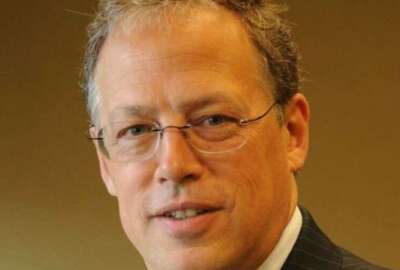The Office of Personnel Management’s Innovation lab has been eerily quiet over the last year or so. We haven’t heard much from them, nor have we seen representatives speaking on the local circuit. But OPM Director Katherine Archuleta recently offered a little insight into what they have been up to over the last year.
Archuleta, who spoke Sept. 3 at the Association for Talent Development government workforce conference in Washington, said the Innovation Lab recently added two new capabilities — human centered design and Lean Six Sigma.
“We are using both of those strategies to address most of the issues we are confronting today,” she said. “We just used Lean Six Sigma and human centered design together to look at customer service in retirement services and have come up with some fantastic ideas and new steps that we are taking.”
Archuleta didn’t offer more details on what were those new ideas and steps.
She did say, however, that other agencies have been and should continue to take advantage of the services offered by the Innovation Lab.
“It is so booked that for me to use that in that space and those resources in the lab, I have to schedule it months in advance,” she said. “The word is spreading not only as a place where good conversations happen, but also good work in solving difficult issues happen.”
The growth of labs such as the one at OPM is both interesting and, for some especially in industry, concerning. Some staff members on Capitol Hill also are starting to pay attention to the different labs popping up across the government.
Along with OPM’s lab, GSA’s 18F and the National Cancer Institute’s User Experience Lab are others among a growing forest of these offices.
18F is trying to improve the online Freedom of Information Act process with new tools.
“This effort will be conducted with the assistance of a number of agencies and offices within the federal government,” stated a blog on the 18F website last week. “A FOIA Task Force, which consists of representatives from the Department of Justice, Environmental Protection Agency, the Office of Management and Budget, the Office of Science and Technology Policy and others, has been created to oversee the creation of these open source software resources.”
Among the tools the task force is looking at are:
- Improving the FOIA request submission experience;
- Creating a scalable infrastructure for making requests to federal agencies; and
- Making it easier for requesters to find records and other information that have already been made available online.
What’s interesting about this effort is whether it already duplicates what’s happening at least at two agencies. The Department of Housing and Urban Development’s Federal Housing Finance Agency and the Comptroller of the Currency in the Treasury Department are using a FOIA system that lives in the cloud.
And, of course, the governmentwide FOIAonline.gov site hasn’t seen the take up of use by agencies as many would have hoped. This, in and of itself, may be why 18F is looking at the online FOIA process in the first place.
The National Cancer Institute launched the Audience Research and Informatics Laboratory in August — the official kickoff is scheduled for Sept. 11.
“It’s a dedicated space to collect data on the customer experience of many of the digital services that NCI provides, including websites, mobile sites, apps and other systems,” NCI wrote in a Sept. 4 blog post. “The lab is complete with modern equipment allowing for a variety of user research: eye-tracking studies, usability testing, in-depth interviews, testing of printed materials and more. It resembles the type of modern user research lab you might see in any major university or large corporation, and joins at least five other federal usability labs in the Washington, D.C., area.”
NCI stated the majority of work in the usability lab is done to address the needs of people affected by cancer. But the lab also reaches out to researchers, scientists, grantees, caregivers, healthcare professionals, health educators and people who want to know about cancer.
This post is part of Jason Miller’s Inside the Reporter’s Notebook feature. Read more from this edition of Jason’s Notebook.
Copyright
© 2024 Federal News Network. All rights reserved. This website is not intended for users located within the European Economic Area.





